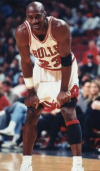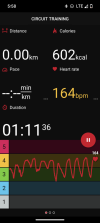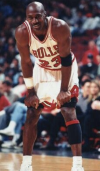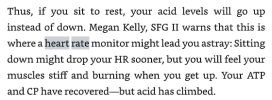Aziatik
Level 6 Valued Member
So I wonder opinions on this - to assume the recovery position or not to during AGT? During intensity training it's a no brainer for me. Drops my hr like a stone.
I had about an hour of testing maxes today in a hot and humid environment and wanted to hit some AXE at the end. I know, not an ideal order. So I grabbed a 32 and chalked up.
Initially my hr was all over the place., I was moving to find a cool spot, dragging gear around, so not ideal. Had the thought to get into the recovery position Jordan was known for.

Result on the hr was dramatic. I remained standing for :20 after the set to let my hr fully soar then put hands on knees for :30. The before and after is pretty clear. I could talk and all that, was just the heat and humidity affecting recovery.

I had about an hour of testing maxes today in a hot and humid environment and wanted to hit some AXE at the end. I know, not an ideal order. So I grabbed a 32 and chalked up.
Initially my hr was all over the place., I was moving to find a cool spot, dragging gear around, so not ideal. Had the thought to get into the recovery position Jordan was known for.

Result on the hr was dramatic. I remained standing for :20 after the set to let my hr fully soar then put hands on knees for :30. The before and after is pretty clear. I could talk and all that, was just the heat and humidity affecting recovery.



